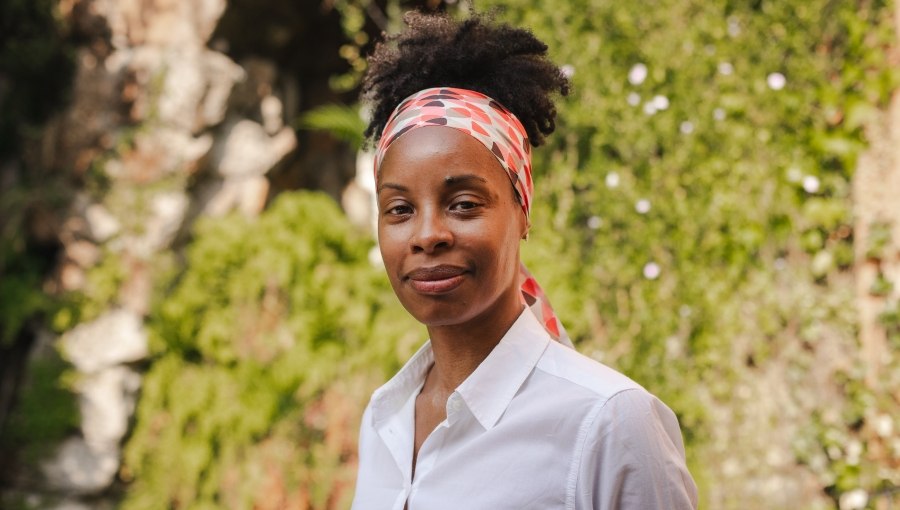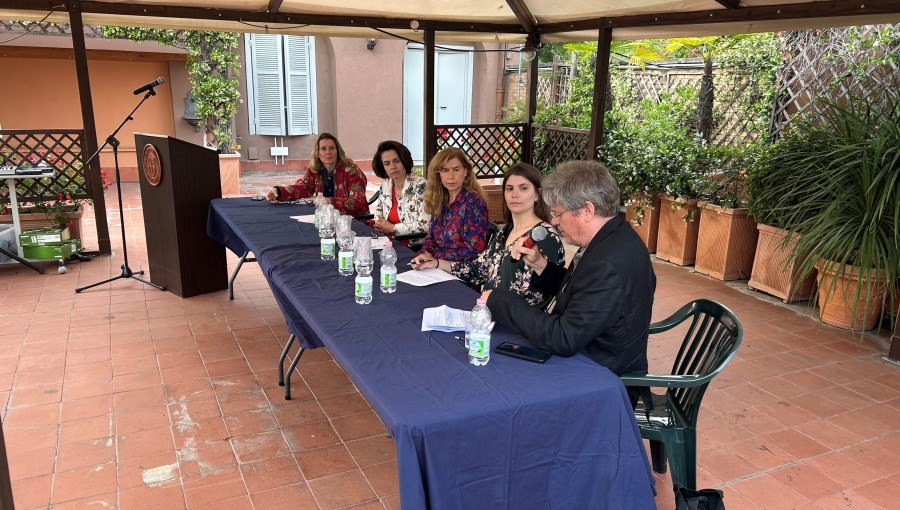JCU Welcomes Valentina Tanni for a Talk on the Digital Image
On February 23, 2022, John Cabot University’s Department of Communications welcomed Valentina Tanni, for a talk called “Memesthetics: The Digital Image as a Network.” Tanni is a contemporary art historian and lecturer who primarily studies the relationship between art and technology, with a focus on internet culture. Her presentation explored topics surrounding the world of digital images and their effects on human society.

Valentina Tanni
Tanni began by defining the scope of image circulation online. It is estimated that over 3.2 billion images are shared online every day, not including technologies such as Google Street view and the global video surveillance system. This is compounded by the fact that there is an unpredictable and seemingly inexhaustible number of image manipulations that combine to form what Tanni referred to as “visual galaxies.”
From there, she defined the three most important factors when considering the digital imagery ecosystem: dissemination, visibility, and manipulation. Although the advent of the internet and advanced editing technologies has made image manipulation ubiquitous, Tanni reminded participants that image manipulation has been around since the invention of photography. At first, images were modified to falsify historical events, then photographers began exploring the field of trick photography with depictions of alternative realities.
Tanni observed that “when a new technology makes its way into the world, a mutation process is set in motion.” At first, computers were not used in the arts, but this all changed at the beginning of the 1980s. Art historians often point towards National Geographic’s February 1982 magazine cover as the first example of modern digital manipulation, where the two pyramids of Giza in Egypt were shifted closer together for editorial purposes. From there, the scale of digital image manipulation skyrocketed, and serious conversations on the importance of truth and verifiability have stimulated the artistic community.
Tanni then discussed what she calls the modern embodiment of digital manipulation: memes. They represent an unregulated world where an image loses its status of being a singular entity as soon as it is shared. Examples of popular memes she reviewed included Bernie Sanders’ mittens, Nyan Cat, and Disaster Girl, a meme that sold for just under half a million dollars for the rights of ownership. Tanni concluded her talk by highlighting the positives and negatives of the digital image world: it offers an unmatched source of creativity, but since people’s perception of the modern world relies so heavily on online sources, digital manipulation threatens to spread disinformation and a distorted view of reality, often with no way of determining truth. Tanni’s concluding thought transforms the familiar adage “to a man with a hammer, everything looks like a nail” into “to a person with a smartphone, everything looks like a meme.”
In the 21st century, the study of art and communication cannot be complete without an evaluation of the digital image world. Tanni’s presentation offered students a succinct analysis of its history and significance today.





